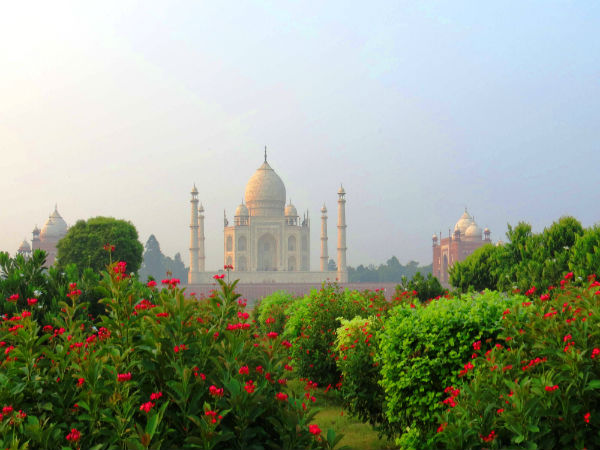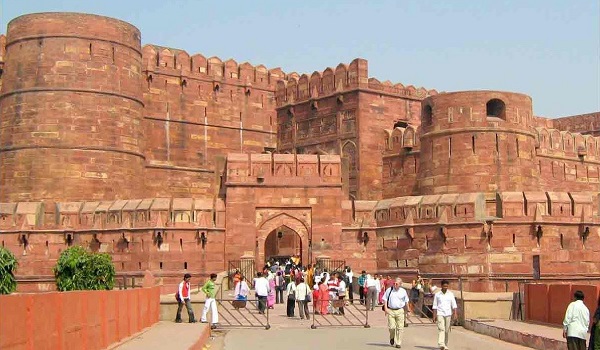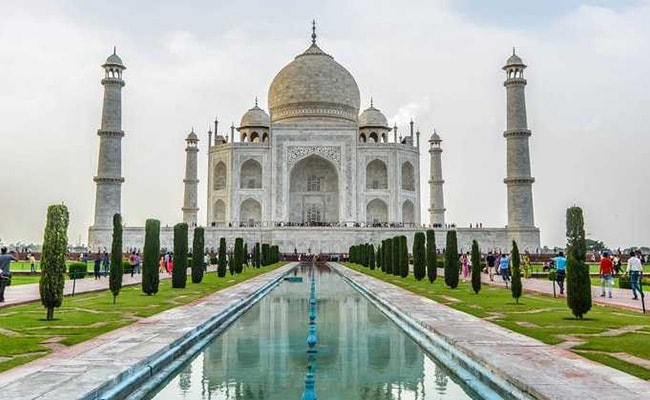Top 5 Places To Visit In Agra
5. Kinari Bazaar
A favourite with both locals as well as tourists, Kinari Bazaar has a reputation for selling some of the finest jewellery in Agra. In addition, it’s also a good spot for bridal shopping, as it stocks everything from apparel and jewellery to ceremonious bric-a-brac. The narrow streets behind Jama Masjid are a crazy maze of overcrowded lanes bursting with colourful markets. There are a number of different bazaars here, each specialising in different wares, but the area is generally known as Kinari Bazaar as many of the lanes fan out from Kinari Bazaar Rd.
4. Mehtab Bagh
Mehtab Bagh (Moonlight Garden) is a Charbagh complex in Agra, North India. It lies north of the Taj Mahal complex and the Agra Fort on the opposite side of the Yamuna River, in the floodplains. The garden complex, square in shape, measures about 300 by 300 metres and is perfectly aligned with the Taj Mahal on the opposite bank. During the rainy season, the ground becomes partially flooded.
3. Itimad-Ud-Daulah
Tomb of I'timād-ud-Daulah is a Mughal mausoleum in the city of Agra in the Indian state of Uttar Pradesh. Often described as a "jewel box", sometimes called the "Baby Tāj", the tomb of I'timād-Ud-Daulah is often regarded as a draft of the Tāj Mahal. Along with the main building, the structure consists of numerous outbuildings and gardens. The tomb, built between 1622 and 1628 represents a transition between the first phase of monumental Mughal architecture The mausoleum was commissioned by Nūr Jahān, the wife of Jahangir, for her father Mirza Beg, originally a Persian Amir in exile,[1] who had been given the title of I'timād-Ud-Daulah
2.Agra Fort
Agra Fort is a historical fort in the city of Agra in India. It was the main residence of the emperors of the Mughal Dynasty till 1638 when the capital was shifted from Agra to Delhi. The Agra fort is a UNESCO World Heritage Site. It is about 2.5 km northwest of its more famous sister monument, the Taj Mahal. The fort can be more accurately described as a walled city.
1. The Taj Mahal
The Taj Mahal meaning "Crown of the Palace" is an ivory-white marble mausoleum on the south bank of the Yamuna river in the Indian city of Agra. It was commissioned in 1632 by the Mughal emperor, Shah Jahan, to house the tomb of his favourite wife, Mumtaz Mahal. The tomb is the centrepiece of a 17-hectare (42-acre)[5] complex, which includes a mosque and a guest house, and is set in formal gardens bounded on three sides by a crenellated wall. The Taj Mahal was designated as a UNESCO world heritage site in 1983 for being "the jewel of Muslim art in India and one of the universally admired masterpieces of the world's heritage". It is regarded by many as the best example of Mughal architecture and a symbol of India's rich history. The Taj Mahal attracts 7–8 million visitors a year. In 2007, it was declared a winner of the New7Wonders of the World (2000–2007) initiative.








0 comments:
Post a Comment